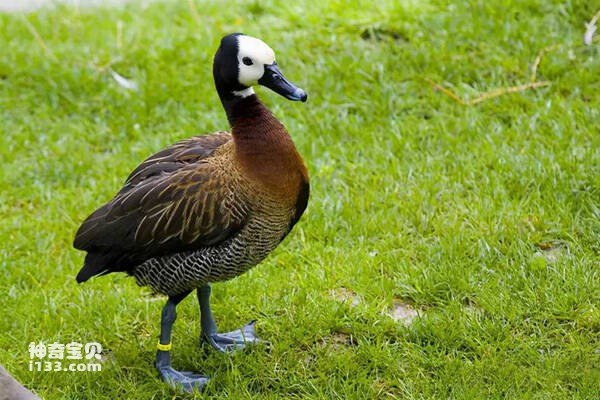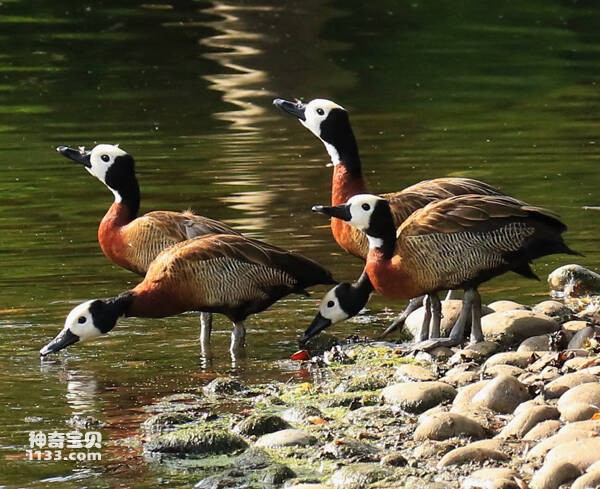Dendrocygna viduata
IUCN
LCBasic Information
Scientific classification
- name:Dendrocygna viduata
- Scientific Name:Dendrocygna viduata,White-faced Whistling-duck,White-faced Duck,White-faced Whistling Duck
- Outline:Waterfowl
- Family:
Vital signs
- length:38-48CM
- Weight:502-820g
- lifetime:No textual research information is available
Feature
The beak is gray, the head and feet are long, the face and crown are white, and the back pillow is black
Distribution and Habitat
It is found in Angola, Antigua and Barbuda, Argentina, Aruba, Barbados, Benin, Bolivia, Bonaire, Sant 'Eustatius and Saba, Botswana, Brazil, Burkina Faso, Burundi, Cameroon, Central African Republic, Chad, Colombia, Comoros, Democratic Republic of the Congo, Cote d 'Ivoire, Cuba, Curacao, Dominican Republic, and Dominican Republic Dominican Republic, Equatorial Guinea, Eritrea, Ethiopia, French Guiana, Gabon, Gambia, Ghana, Guadeloupe, Guinea, Guinea-Bissau, Guyana, Haiti, Kenya, Lesotho, Liberia, Madagascar, Malawi, Mali, Mauritania, Mauritania, Mauritius, Mayotte, Montserrat, Mossan Mozambique, Namibia, Nicaragua, Niger, Nigeria, Paraguay, Peru, Reunion, Rwanda, Saint Kitts and Nevis, Saint Lucia, Saint Vincent and the Grenadines, Senegal, Sierra Leone, Saint Maarten (Netherlands) Somalia, South Africa, South Sudan, Suriname, Eswatini, United Republic of Tanzania, Togo, Trinidad and Tobago, Uganda, Uruguay, Venezuela, Bolivarian Republic, Zambia, Zimbabwe.
Likely extinct
Appearance
The white-faced tree duck is 38-48 cm long, with a wingspan of 86-94 cm, weighing 820 grams for males and 502 grams for females. The beak is grey and the head and feet are long. Face and crown are white, the back pillow is black. The back and wings are dark brown to black, and the lower body is black with white markings on the sides. The neck is chestnut brown. The markings on the head of the chicks are not so obvious.
Details
Dendrocygna viduata (Dendrocygna viduata) is a White-faced whistling-duck, White-faced Duck, and White-faced Whistling Duck.

The white-faced tree duck can feed both on the surface of the water and under the water, and sometimes on the ground near the water to forage for grass. The food is mainly plant food such as rice, crop seedlings, grasses and aquatic plants, but also animal food such as insects, snails, mollusks, frogs and small fish. Tree ducks usually fly in groups of a few to a few dozen at dusk to feed in nearby rice paddies and return to their daytime waters before dawn.

When the white face tree duck stops, the body is upright, and a few often look around from time to time, when people or enemies are near, the first to take off, followed by other trees and ducks, and the sex is extremely alert. Often in groups of a few to dozens of activities and foraging, there are many to hundreds of large groups. It is weak in flight and not as fast as other ducks. Also good at swimming and diving, and diving ability is very strong, a dive up to ten minutes. During the hot day, they often sleep and rest in the reeds or other tall water weeds. When food is abundant and undisturbed, they often inhabit fixed places and generally do not change their habitat or even migrate long distances.

The breeding season of the white-faced tree duck is from May to July. Nest in grass on the ground covered with trees or plants or in reed swamps and tree holes. Courtship and mating take place in the water. Before mating, the male and female ducks swim together. The male ducks continuously dip his beak towards the female, and the female ducks maintain an upright position. The nest is composed of grass leaves and stems, with a diameter of 25cm and a height of 6cm. Each brood lays 8-12 eggs, generally about 10, and the eggs are white. The eggs are incubated by both sexes for 27-30 days.
Listed on the International Union for Conservation of Nature (IUCN) 2012 Red List of Threatened Species ver 3.1 - Not Threatened (LC).
Protect wild animals and eliminate wild meat.
Maintaining ecological balance is everyone's responsibility!








